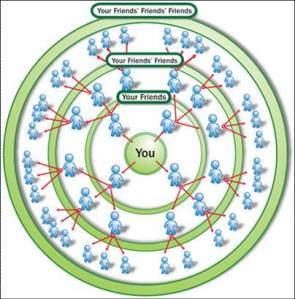
On Cinco De Mayo, Portland’s the Dandy Warhols were supposed to release their sixth studio album, “Earth to the Dandy Warhols.” But unfortunately, the post-modernist, psychedelic-rock the Dandy Warhols had promised me today was never delivered, and instead of writing this piece with an overwhelming ringing in my ears that surely indicates early symptoms of tenatis, I can hear every whisper, footstep and shuffle on the Knight Library’s first floor.
As a huge fan, or perhaps fanatic, I have been anxiously awaiting the release of “Earth to the Dandy Warhols” for literally three years. I was especially eager to hear this new album because of the corporate change the band had undergone in 2006. After waning sales of their most recent album, the Dandys’ record label, Capitol Records, decided it was time to part ways with the group who seemed to continue to commercially underperform in U.S. markets. This came as a shock to the band (and its fans), especially because they had been consistently earning Capitol Records huge dividens in European markets for the past decade. But the self-assured Dandys didn’t panic, and decided they had established themselves well enough to create their own independent record label. The way the band saw it, this was their opportunity to finally record music in the anti-corporate spirit they had always resembled without subjecting themselves poverty and obscurity.
 The group fervently began working on a new record, and were coming out with some of their best material in years. (I’m qualified to say that, I’ve seen them 14 times.) But there’s more to a major record release than just producing good music, and I was skeptical of the group’s ability to handle the business aspect of the release. My skepticism was confirmed when Google searches couldn’t find any press on “Earth to the Dandy Warhols” — even weeks before the scheduled release date. The situation seemed even more dire when only days before the release, the band hadn’t even released a single to promote the album. Needless to say, I was worried.
The group fervently began working on a new record, and were coming out with some of their best material in years. (I’m qualified to say that, I’ve seen them 14 times.) But there’s more to a major record release than just producing good music, and I was skeptical of the group’s ability to handle the business aspect of the release. My skepticism was confirmed when Google searches couldn’t find any press on “Earth to the Dandy Warhols” — even weeks before the scheduled release date. The situation seemed even more dire when only days before the release, the band hadn’t even released a single to promote the album. Needless to say, I was worried.
Finally, Cinco De Mayo arrived, but I could have cared less about the holiday, I was only concerned with getting my hands on that new album. When I woke up, I was almost scared to open their Web site, because I was worried my worst fears of a delayed album release would be realized — and they were. For all my patience, anticipation, and even desperation, to the hear the new album, I was given a lousy single and a redesigned Web site……………………………. #@!$&@*$@!!!!!! (OK, the single wasn’t lousy, it was AWESOME. Check it out.)
I had been duped by the Dandy Warhols. What made it even worse was they didn’t even acknowledge the major frustration and disappointment they had caused me. Instead, what they did was announce that today (May 5) was the beginning of “Phase One” of their record release, and that the full album would be available on May 19 when “Phase Two” begins. What garbage. At least admit that something went wrong with the release and that this whole debacle isn’t part of some “plan.”
I hate to admit it, but this is a point in time where the Dandys could have greatly benefited from from the corporate interests of Capitol Records. But even without the presence of Capitol, this situation could have been mostly avoided with a competent team of public relations practitioners.
To begin with, the complete lack of press coverage for “Earth to the Dandy Warhols” is clearly symptomatic of ineffective and insufficient public relations initiatives. Obscurity in the U.S. media is nothing new to the Dandy Warhols and has always been a problem for the band. In fact, in an article on billboard.com the Dandy Warhols’ staunchest criticism of Capitol Records was that they did not appropriately promote the band.
If the band is suffering from a lack of commercial success, the remedy is not an ambiguous and unseen album release after being dropped from its major label. It is a highly publicized album release that is a triumph of artistic independence for the band. This, as well as the myriad of other potential story lines that could have surrounded this album release, coupled with the band’s established notoriety is more than enough material for a successful public relations effort.
Second of all, in my junior opinion, once the group knew they were behind schedule, the decision to not postpone the official release date of “Earth to the Dandy Warhols” was a mistake. Although doing so may have upset some fans, a well-managed crisis communications plan could have assuaged the majority of fan dissatisfaction with the decision. Once again, strong public relations could have helped the album release. But at this point, this is all speculation, and in light of things, these examples are only minor public communications infractions committed by the Dandy Warhols.

When the band needed to practice good public relations most was today, when they disappointed thousands of fans who were expecting a new Dandy Warhols album. According to an article written by James Grunig and Linda Childers Hon, the Dandy Warhols may have greatly damaged their relationship with their fans. One concept the article discusses is trust, which is composed of integrity, dependability and competence. By misleading their fans about the date of the album release, the Dandy Warhols may not be viewed as either dependable or competent by their fans. The obvious and apparent “cover up” of the mishandled album release may also lead fans to call the integrity of the band into question. Another key component to maintaining healthy relationships according to the article is satisfaction. Fans of the Dandy Warhols are clearly unsatisfied in this circumstance. The potentially damaged relationship between the Dandy Warhols and their fans is another compelling reason why they should adopt better public relations practices.
As a fan, not only do I feel that I’m owed some sort of an explanation by the Dandy Warhols, but I’m also confused as to what’s happening with the release. I’m not even sure if I’ll be able to buy the album at mainstream record stores, or where I’ll be able to download it off the Internet. These types of questions beg for clear communication between the band and its bewildered fans.
I don’t blame the Dandy Warhols for this mishandled album release because they’re artists, not businessmen or communications professionals. But I do blame the band’s manager and supposed “press contact” Lee A. Cohen, who has a responsibility to the band to handle these types of issues — especially if he has assumed the role of press contact.
I’m sure the Dandy Warhols are immensely more loyal to their friend, manager, and press contact Lee A. Cohen, than they are to some un-credentialed college student critiquing the album release from his ivory tower. They might even denounce me, ban from attending their concerts, and then give me a million reasons why I’m wrong and how misinformed I really am. But if that’s the case, the simple fact that I am misinformed (and I’m much less likely to be misinformed than most casual fans considering the amount of time I spend researching this band) is reflective of an ill-conceived and ineffective public relations campaign, and supports my argument that the Dandy Warhols would have been greatly benefited by proper handling of their public relations duties.































